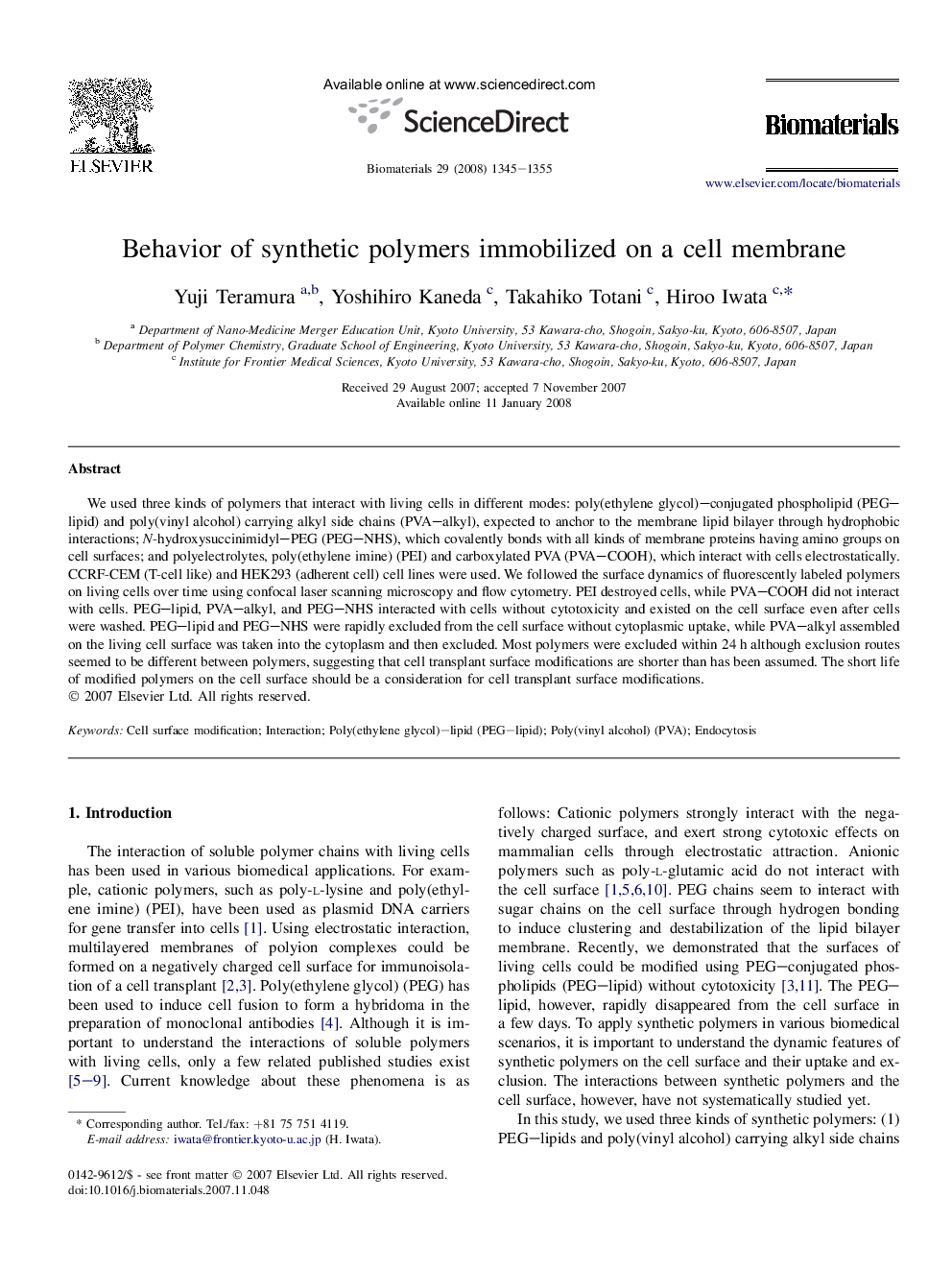| کد مقاله | کد نشریه | سال انتشار | مقاله انگلیسی | نسخه تمام متن |
|---|---|---|---|---|
| 9672 | 642 | 2008 | 11 صفحه PDF | دانلود رایگان |

We used three kinds of polymers that interact with living cells in different modes: poly(ethylene glycol)–conjugated phospholipid (PEG–lipid) and poly(vinyl alcohol) carrying alkyl side chains (PVA–alkyl), expected to anchor to the membrane lipid bilayer through hydrophobic interactions; N-hydroxysuccinimidyl–PEG (PEG–NHS), which covalently bonds with all kinds of membrane proteins having amino groups on cell surfaces; and polyelectrolytes, poly(ethylene imine) (PEI) and carboxylated PVA (PVA–COOH), which interact with cells electrostatically. CCRF-CEM (T-cell like) and HEK293 (adherent cell) cell lines were used. We followed the surface dynamics of fluorescently labeled polymers on living cells over time using confocal laser scanning microscopy and flow cytometry. PEI destroyed cells, while PVA–COOH did not interact with cells. PEG–lipid, PVA–alkyl, and PEG–NHS interacted with cells without cytotoxicity and existed on the cell surface even after cells were washed. PEG–lipid and PEG–NHS were rapidly excluded from the cell surface without cytoplasmic uptake, while PVA–alkyl assembled on the living cell surface was taken into the cytoplasm and then excluded. Most polymers were excluded within 24 h although exclusion routes seemed to be different between polymers, suggesting that cell transplant surface modifications are shorter than has been assumed. The short life of modified polymers on the cell surface should be a consideration for cell transplant surface modifications.
Journal: Biomaterials - Volume 29, Issue 10, April 2008, Pages 1345–1355